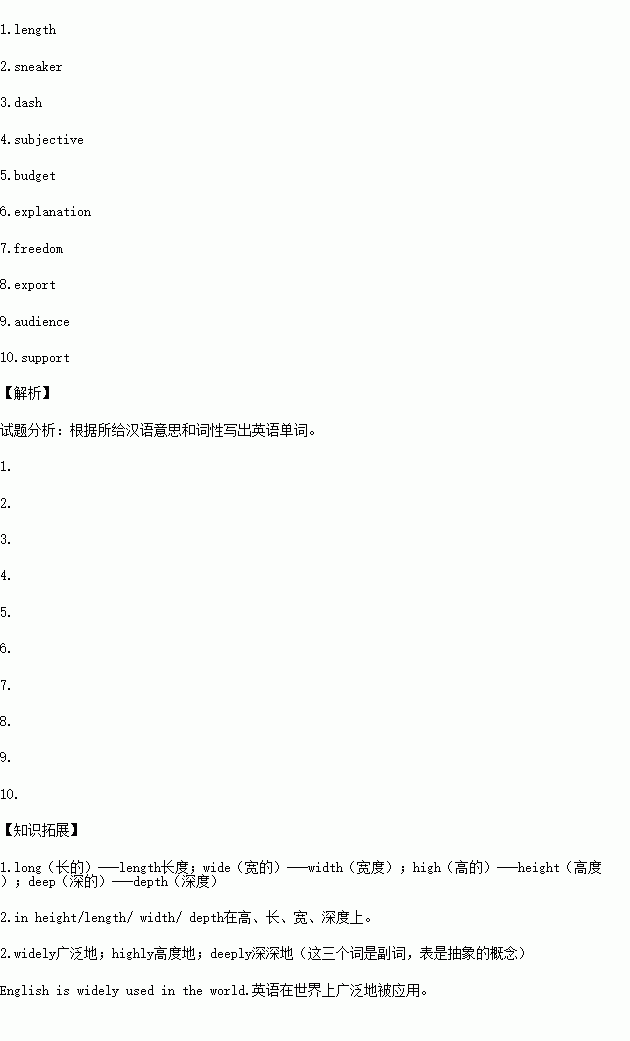题目内容
单词拼写
1.n. 长度;长 __________
2.n. 运动鞋(单数) __________
3.vi. 猛冲;突进 __________
4.adj. 主观的 __________
5.n. 预算;开支 __________
6.n. 解释;讲解 __________
7.n. 自由;自主 __________
8.vi. 输出;出口 __________
9.n. 观众;听众 __________
10.vt. 支持;拥护 __________
练习册系列答案
 应用题天天练四川大学出版社系列答案
应用题天天练四川大学出版社系列答案
相关题目
在学习、生活和工作中,学会与人合作是非常重要的。请根据下表中提供的信息,写一篇主题为 “Being a good partner”的英文发言稿。
为何合作 | 有利于互相学习,增进友谊,节省时间与精力。 | |
与谁合作 | 与喜欢的人合作 | 心情愉快,同甘共苦。 |
与不喜欢的人合作 | 学会容忍,发现优点。 | |
怎样合作 | 你的观点……(至少2条) | |
注意:1. 对所给要点进行陈述,适当发挥,不要逐字翻译。
2. 词数110左右。开头和结尾已经给出,不计入总词数。
参考词汇:合作cooperation n. cooperate v.
Good afternoon, everyone!
The topic of my speech today is “Being a good partner.”
Wish my views would be helpful. Thank you for your listening!

